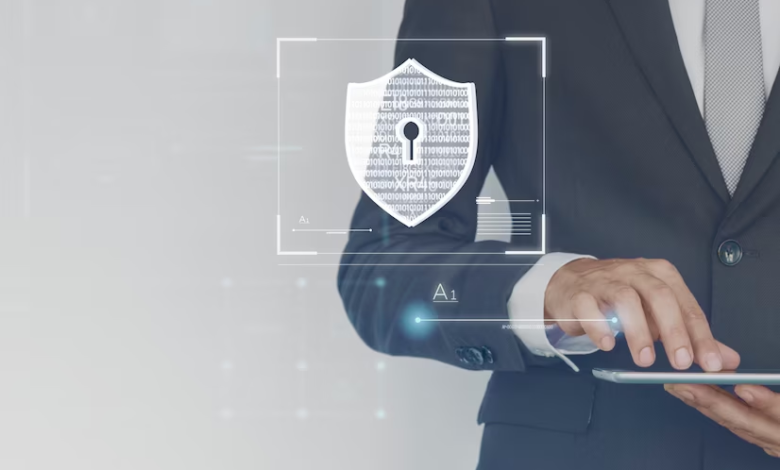Understanding Cybersecurity Threats to the Financial Industry and Effective Prevention Measures

In our interconnected digital world, the financial sector stands as one of the primary targets for cybercriminals. This sector’s sensitivity is due to the amount of money processed daily and the troves of personal data it manages, making it a veritable gold mine for nefarious activities. This article will delve into the major cybersecurity threats that the financial industry currently faces and suggest efficient methods to prevent them.
Read More: Most Important Cybersecurity Trends in 2023
The Spectrum of Cyber Threats
Phishing Attacks
Phishing attacks are perhaps the most common form of cyber attack. The method is deceptively simple: criminals masquerade as trustworthy entities, sending convincing emails or messages to trick recipients into revealing sensitive information, such as login credentials or credit card numbers. With each passing day, these phishing schemes are becoming more sophisticated and harder to spot. For the financial sector, the cost of a successful phishing attack can be enormous, ranging from financial loss to reputational damage and reduced customer trust.
Ransomware Attacks
Ransomware attacks are the digital equivalent of hostage situations. In these scenarios, attackers infiltrate a network and encrypt the organization’s data, effectively holding it hostage. The culprits then demand a ransom, typically in a form of hard-to-trace cryptocurrency like Bitcoin, in exchange for the decryption key. The impact on financial institutions can be catastrophic, crippling their operations and leaving them in a state of paralysis until the ransom is paid or the data is recovered.
Data Breaches
A data breach involves unauthorized access to sensitive information, including personal data and financial records. Once in possession of this information, criminals can commit identity theft, execute fraudulent transactions, or sell the data on the dark web, which can be used for all kinds of illicit activities. The after-effects of data breaches on financial institutions are long-lasting, affecting not only their bottom line but also damaging their reputation and customer trust.
Insider Threats
Interestingly, not all threats come from the outside. Insider threats, whether they stem from disgruntled employees, careless staff, or individuals with malicious intent, pose a considerable risk. These insiders, given their authorized access and familiarity with the organization’s operations, can cause significant damage. The threat becomes even more dangerous when it involves employees in sensitive positions with access to critical information and systems.
Advanced Persistent Threats (APTs)
Advanced Persistent Threats are stealthy, slow-burning attacks where an unauthorized user infiltrates a network and lurks undetected for an extended period. APTs are usually the work of organized, highly skilled cybercriminals or state-sponsored hackers whose objectives typically include espionage or data theft. Their focus is on staying hidden and maintaining access to the network, which allows them to monitor network activities, steal valuable data, and potentially cause significant harm over time.
Supply Chain Attacks
In a supply chain attack, the hacker targets less secure elements in a network, such as a third-party vendor or supplier. Once they compromise these elements, they can gain access to the targeted organization’s network. These attacks are particularly concerning for financial institutions due to the intricate web of third-party relationships they maintain, each potentially a chink in their cybersecurity armor.
Read More: 14 Best Paying Jobs in Technology in 2023
Key Preventive Measures

The financial sector is one of the most significant targets for cybercriminals due to the sheer amount of valuable data it holds and processes. To protect these digital treasures, organizations must adopt a robust, multi-faceted cybersecurity strategy. This approach encompasses a plethora of techniques, including privacy assessments and diverse cybersecurity services. This article expands on these key preventive measures:
Regular Security Training and Awareness
Constant vigilance is an organization’s first line of defense. Regular training and raising awareness about cybersecurity threats can substantially reduce the likelihood of successful attacks. Sessions should focus on various issues, from recognizing phishing attempts to choosing strong, unique passwords and understanding the critical role of software updates. Integrating topics like the basics of privacy assessments and the advantages of various cybersecurity services can further elevate your staff’s cybersecurity consciousness.
Implementing Robust Security Infrastructure
Building a fortified digital bastion is a non-negotiable necessity. Your digital defense must incorporate a range of elements, from advanced firewalls and intrusion detection systems to encryption tools and anti-malware software. Organizations should also embrace multi-factor authentication (MFA) and biometric security measures to add another layer of defense. Utilizing cybersecurity services offered by professional agencies can help you set up and maintain this robust infrastructure.
Privacy Assessments
Privacy assessments are essential to gauge your organization’s data privacy practices. They reveal how data is collected, stored, used, and shared, allowing you to identify and address any privacy vulnerabilities. Regular privacy assessments will not only help your organization meet regulatory compliance but will also enhance trust among your clients, knowing their data is respected and safeguarded.
Incident Response Plan
Despite implementing top-tier security measures, breaches can still occur. It’s vital to have a comprehensive incident response plan in place. This plan details the procedure to follow when a security incident arises, including identifying and isolating the threat, mitigating damage, collecting evidence for an investigation, and communicating with all relevant stakeholders. Cybersecurity services can guide the development and implementation of this plan.
Regular Vulnerability Assessments and Penetration Testing
Frequent testing for system vulnerabilities helps identify potential weak spots before cyber criminals do. Penetration testing, also known as ethical hacking, is a valuable tool that simulates cyberattacks to uncover system vulnerabilities. Engaging cybersecurity services for such tasks ensures professional handling and effective mitigation strategies.
Supply Chain Security
Remember, your organization’s security is only as strong as its weakest link, and sometimes, that weak link is part of the supply chain. It’s essential to ensure that your suppliers and third-party service providers also adhere to strict security standards. Consider conducting regular privacy assessments of these external entities or insisting on specific security measures in your contracts.
Insider Threat Protection
It’s necessary to monitor for unusual or suspicious activities within your network which might hint at an insider threat. Limiting access to sensitive data only to those employees who need it to perform their jobs can significantly reduce insider threat risks. Regular privacy assessments can further reinforce this aspect of security.
Cyber Insurance
Though not a preventive measure, cyber insurance plays a critical role in managing the financial risk associated with data breaches or other cyber events. Cyber insurance can help shoulder costs like legal fees, breach notification expenses, and the restoration of affected customers’ personal identities.
Conclusion
In summary, the financial industry, with its vast data repositories and monetary transactions, will always be an attractive target for cybercriminals. While threats evolve continuously, being vigilant and proactive can go a long way in safeguarding vital assets and maintaining the trust of stakeholders. It’s not about eliminating every single risk—that’s nearly impossible—but about managing them in such a way that the organization can rebound quickly when incidents do occur. Cyber resilience is the name of the game in the digital world we live in.











